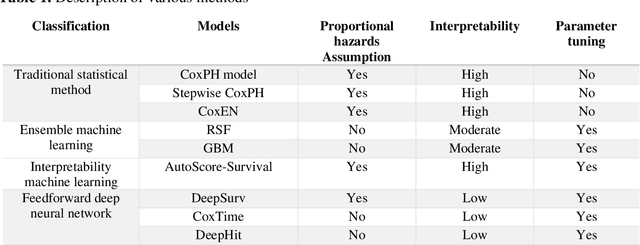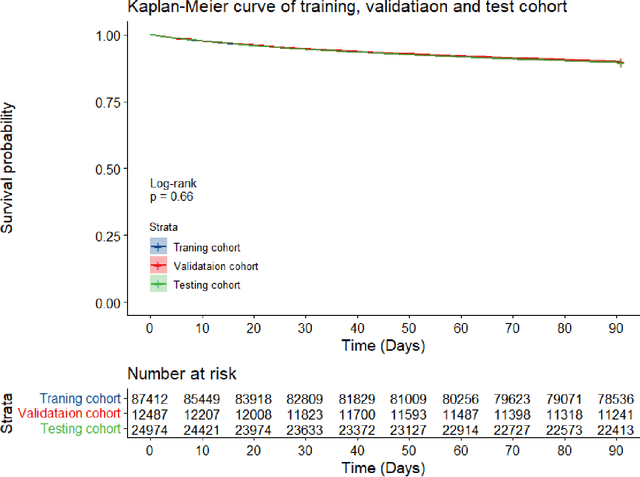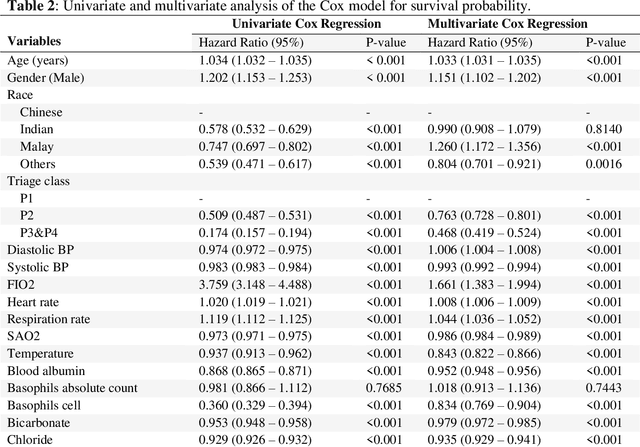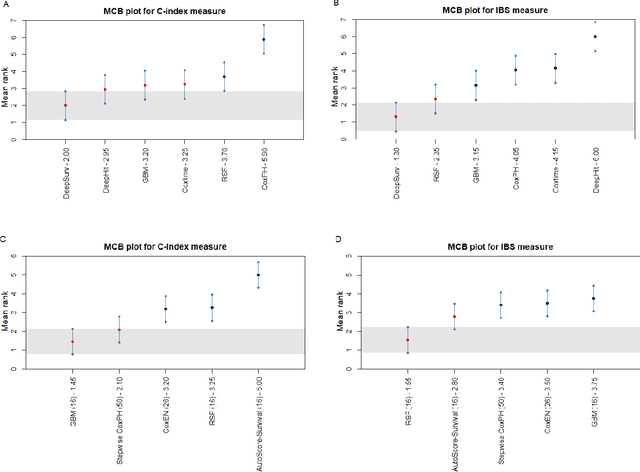Ziwen Wang
RESCUE: Crowd Evacuation Simulation via Controlling SDM-United Characters
Jul 27, 2025



Abstract:Crowd evacuation simulation is critical for enhancing public safety, and demanded for realistic virtual environments. Current mainstream evacuation models overlook the complex human behaviors that occur during evacuation, such as pedestrian collisions, interpersonal interactions, and variations in behavior influenced by terrain types or individual body shapes. This results in the failure to accurately simulate the escape of people in the real world. In this paper, aligned with the sensory-decision-motor (SDM) flow of the human brain, we propose a real-time 3D crowd evacuation simulation framework that integrates a 3D-adaptive SFM (Social Force Model) Decision Mechanism and a Personalized Gait Control Motor. This framework allows multiple agents to move in parallel and is suitable for various scenarios, with dynamic crowd awareness. Additionally, we introduce Part-level Force Visualization to assist in evacuation analysis. Experimental results demonstrate that our framework supports dynamic trajectory planning and personalized behavior for each agent throughout the evacuation process, and is compatible with uneven terrain. Visually, our method generates evacuation results that are more realistic and plausible, providing enhanced insights for crowd simulation. The code is available at http://cic.tju.edu.cn/faculty/likun/projects/RESCUE.
Variational Supervised Contrastive Learning
Jun 09, 2025Abstract:Contrastive learning has proven to be highly efficient and adaptable in shaping representation spaces across diverse modalities by pulling similar samples together and pushing dissimilar ones apart. However, two key limitations persist: (1) Without explicit regulation of the embedding distribution, semantically related instances can inadvertently be pushed apart unless complementary signals guide pair selection, and (2) excessive reliance on large in-batch negatives and tailored augmentations hinders generalization. To address these limitations, we propose Variational Supervised Contrastive Learning (VarCon), which reformulates supervised contrastive learning as variational inference over latent class variables and maximizes a posterior-weighted evidence lower bound (ELBO) that replaces exhaustive pair-wise comparisons for efficient class-aware matching and grants fine-grained control over intra-class dispersion in the embedding space. Trained exclusively on image data, our experiments on CIFAR-10, CIFAR-100, ImageNet-100, and ImageNet-1K show that VarCon (1) achieves state-of-the-art performance for contrastive learning frameworks, reaching 79.36% Top-1 accuracy on ImageNet-1K and 78.29% on CIFAR-100 with a ResNet-50 encoder while converging in just 200 epochs; (2) yields substantially clearer decision boundaries and semantic organization in the embedding space, as evidenced by KNN classification, hierarchical clustering results, and transfer-learning assessments; and (3) demonstrates superior performance in few-shot learning than supervised baseline and superior robustness across various augmentation strategies.
ProteinZero: Self-Improving Protein Generation via Online Reinforcement Learning
Jun 09, 2025Abstract:Protein generative models have shown remarkable promise in protein design but still face limitations in success rate, due to the scarcity of high-quality protein datasets for supervised pretraining. We present ProteinZero, a novel framework that enables scalable, automated, and continuous self-improvement of the inverse folding model through online reinforcement learning. To achieve computationally tractable online feedback, we introduce efficient proxy reward models based on ESM-fold and a novel rapid ddG predictor that significantly accelerates evaluation speed. ProteinZero employs a general RL framework balancing multi-reward maximization, KL-divergence from a reference model, and a novel protein-embedding level diversity regularization that prevents mode collapse while promoting higher sequence diversity. Through extensive experiments, we demonstrate that ProteinZero substantially outperforms existing methods across every key metric in protein design, achieving significant improvements in structural accuracy, designability, thermodynamic stability, and sequence diversity. Most impressively, ProteinZero reduces design failure rates by approximately 36% - 48% compared to widely-used methods like ProteinMPNN, ESM-IF and InstructPLM, consistently achieving success rates exceeding 90% across diverse and complex protein folds. Notably, the entire RL run on CATH-4.3 can be done with a single 8 X GPU node in under 3 days, including reward computation. Our work establishes a new paradigm for protein design where models evolve continuously from their own generated outputs, opening new possibilities for exploring the vast protein design space.
HSSBench: Benchmarking Humanities and Social Sciences Ability for Multimodal Large Language Models
Jun 04, 2025Abstract:Multimodal Large Language Models (MLLMs) have demonstrated significant potential to advance a broad range of domains. However, current benchmarks for evaluating MLLMs primarily emphasize general knowledge and vertical step-by-step reasoning typical of STEM disciplines, while overlooking the distinct needs and potential of the Humanities and Social Sciences (HSS). Tasks in the HSS domain require more horizontal, interdisciplinary thinking and a deep integration of knowledge across related fields, which presents unique challenges for MLLMs, particularly in linking abstract concepts with corresponding visual representations. Addressing this gap, we present HSSBench, a dedicated benchmark designed to assess the capabilities of MLLMs on HSS tasks in multiple languages, including the six official languages of the United Nations. We also introduce a novel data generation pipeline tailored for HSS scenarios, in which multiple domain experts and automated agents collaborate to generate and iteratively refine each sample. HSSBench contains over 13,000 meticulously designed samples, covering six key categories. We benchmark more than 20 mainstream MLLMs on HSSBench and demonstrate that it poses significant challenges even for state-of-the-art models. We hope that this benchmark will inspire further research into enhancing the cross-disciplinary reasoning abilities of MLLMs, especially their capacity to internalize and connect knowledge across fields.
Audio Turing Test: Benchmarking the Human-likeness of Large Language Model-based Text-to-Speech Systems in Chinese
May 16, 2025Abstract:Recent advances in large language models (LLMs) have significantly improved text-to-speech (TTS) systems, enhancing control over speech style, naturalness, and emotional expression, which brings TTS Systems closer to human-level performance. Although the Mean Opinion Score (MOS) remains the standard for TTS System evaluation, it suffers from subjectivity, environmental inconsistencies, and limited interpretability. Existing evaluation datasets also lack a multi-dimensional design, often neglecting factors such as speaking styles, context diversity, and trap utterances, which is particularly evident in Chinese TTS evaluation. To address these challenges, we introduce the Audio Turing Test (ATT), a multi-dimensional Chinese corpus dataset ATT-Corpus paired with a simple, Turing-Test-inspired evaluation protocol. Instead of relying on complex MOS scales or direct model comparisons, ATT asks evaluators to judge whether a voice sounds human. This simplification reduces rating bias and improves evaluation robustness. To further support rapid model development, we also finetune Qwen2-Audio-Instruct with human judgment data as Auto-ATT for automatic evaluation. Experimental results show that ATT effectively differentiates models across specific capability dimensions using its multi-dimensional design. Auto-ATT also demonstrates strong alignment with human evaluations, confirming its value as a fast and reliable assessment tool. The white-box ATT-Corpus and Auto-ATT can be found in ATT Hugging Face Collection (https://huggingface.co/collections/meituan/audio-turing-test-682446320368164faeaf38a4).
DSSR-Net for Super-Resolution Radar Range Profiles
Apr 06, 2025Abstract:High-resolution radar range profile (RRP) is crucial for accurate target recognition and scene perception. To get a high-resolution RRP, many methods have been developed, such as multiple signal classification (MUSIC), orthogonal matching pursuit (OMP), and a few deep learning-based approaches. Although they break through the Rayleigh resolution limit determined by radar signal bandwidth, these methods either get limited super-resolution capability or work well just in high signal to noise ratio (SNR) scenarios. To overcome these limitations, in this paper, an interpretable neural network for super-resolution RRP (DSSR-Net) is proposed by integrating the advantages of both model-guided and data-driven models. Specifically, DSSR-Net is designed based on a sparse representation model with dimension scaling, and then trained on a training dataset. Through dimension scaling, DSSR-Net lifts the radar signal into high-dimensional space to extract subtle features of closely spaced objects and suppress the noise of the high-dimensional features. It improves the super-resolving power of closely spaced objects and lowers the SNR requirement of radar signals compared to existing methods. The superiority of the proposed algorithm for super-resolution RRP reconstruction is verified via experiments with both synthetic and measured data.
DisenGCD: A Meta Multigraph-assisted Disentangled Graph Learning Framework for Cognitive Diagnosis
Oct 23, 2024



Abstract:Existing graph learning-based cognitive diagnosis (CD) methods have made relatively good results, but their student, exercise, and concept representations are learned and exchanged in an implicit unified graph, which makes the interaction-agnostic exercise and concept representations be learned poorly, failing to provide high robustness against noise in students' interactions. Besides, lower-order exercise latent representations obtained in shallow layers are not well explored when learning the student representation. To tackle the issues, this paper suggests a meta multigraph-assisted disentangled graph learning framework for CD (DisenGCD), which learns three types of representations on three disentangled graphs: student-exercise-concept interaction, exercise-concept relation, and concept dependency graphs, respectively. Specifically, the latter two graphs are first disentangled from the interaction graph. Then, the student representation is learned from the interaction graph by a devised meta multigraph learning module; multiple learnable propagation paths in this module enable current student latent representation to access lower-order exercise latent representations, which can lead to more effective nad robust student representations learned; the exercise and concept representations are learned on the relation and dependency graphs by graph attention modules. Finally, a novel diagnostic function is devised to handle three disentangled representations for prediction. Experiments show better performance and robustness of DisenGCD than state-of-the-art CD methods and demonstrate the effectiveness of the disentangled learning framework and meta multigraph module. The source code is available at \textcolor{red}{\url{https://github.com/BIMK/Intelligent-Education/tree/main/DisenGCD}}.
State Space Model for New-Generation Network Alternative to Transformers: A Survey
Apr 15, 2024Abstract:In the post-deep learning era, the Transformer architecture has demonstrated its powerful performance across pre-trained big models and various downstream tasks. However, the enormous computational demands of this architecture have deterred many researchers. To further reduce the complexity of attention models, numerous efforts have been made to design more efficient methods. Among them, the State Space Model (SSM), as a possible replacement for the self-attention based Transformer model, has drawn more and more attention in recent years. In this paper, we give the first comprehensive review of these works and also provide experimental comparisons and analysis to better demonstrate the features and advantages of SSM. Specifically, we first give a detailed description of principles to help the readers quickly capture the key ideas of SSM. After that, we dive into the reviews of existing SSMs and their various applications, including natural language processing, computer vision, graph, multi-modal and multi-media, point cloud/event stream, time series data, and other domains. In addition, we give statistical comparisons and analysis of these models and hope it helps the readers to understand the effectiveness of different structures on various tasks. Then, we propose possible research points in this direction to better promote the development of the theoretical model and application of SSM. More related works will be continuously updated on the following GitHub: https://github.com/Event-AHU/Mamba_State_Space_Model_Paper_List.
Developing Federated Time-to-Event Scores Using Heterogeneous Real-World Survival Data
Mar 08, 2024



Abstract:Survival analysis serves as a fundamental component in numerous healthcare applications, where the determination of the time to specific events (such as the onset of a certain disease or death) for patients is crucial for clinical decision-making. Scoring systems are widely used for swift and efficient risk prediction. However, existing methods for constructing survival scores presume that data originates from a single source, posing privacy challenges in collaborations with multiple data owners. We propose a novel framework for building federated scoring systems for multi-site survival outcomes, ensuring both privacy and communication efficiency. We applied our approach to sites with heterogeneous survival data originating from emergency departments in Singapore and the United States. Additionally, we independently developed local scores at each site. In testing datasets from each participant site, our proposed federated scoring system consistently outperformed all local models, evidenced by higher integrated area under the receiver operating characteristic curve (iAUC) values, with a maximum improvement of 11.6%. Additionally, the federated score's time-dependent AUC(t) values showed advantages over local scores, exhibiting narrower confidence intervals (CIs) across most time points. The model developed through our proposed method exhibits effective performance on each local site, signifying noteworthy implications for healthcare research. Sites participating in our proposed federated scoring model training gained benefits by acquiring survival models with enhanced prediction accuracy and efficiency. This study demonstrates the effectiveness of our privacy-preserving federated survival score generation framework and its applicability to real-world heterogeneous survival data.
Survival modeling using deep learning, machine learning and statistical methods: A comparative analysis for predicting mortality after hospital admission
Mar 04, 2024



Abstract:Survival analysis is essential for studying time-to-event outcomes and providing a dynamic understanding of the probability of an event occurring over time. Various survival analysis techniques, from traditional statistical models to state-of-the-art machine learning algorithms, support healthcare intervention and policy decisions. However, there remains ongoing discussion about their comparative performance. We conducted a comparative study of several survival analysis methods, including Cox proportional hazards (CoxPH), stepwise CoxPH, elastic net penalized Cox model, Random Survival Forests (RSF), Gradient Boosting machine (GBM) learning, AutoScore-Survival, DeepSurv, time-dependent Cox model based on neural network (CoxTime), and DeepHit survival neural network. We applied the concordance index (C-index) for model goodness-of-fit, and integral Brier scores (IBS) for calibration, and considered the model interpretability. As a case study, we performed a retrospective analysis of patients admitted through the emergency department of a tertiary hospital from 2017 to 2019, predicting 90-day all-cause mortality based on patient demographics, clinicopathological features, and historical data. The results of the C-index indicate that deep learning achieved comparable performance, with DeepSurv producing the best discrimination (DeepSurv: 0.893; CoxTime: 0.892; DeepHit: 0.891). The calibration of DeepSurv (IBS: 0.041) performed the best, followed by RSF (IBS: 0.042) and GBM (IBS: 0.0421), all using the full variables. Moreover, AutoScore-Survival, using a minimal variable subset, is easy to interpret, and can achieve good discrimination and calibration (C-index: 0.867; IBS: 0.044). While all models were satisfactory, DeepSurv exhibited the best discrimination and calibration. In addition, AutoScore-Survival offers a more parsimonious model and excellent interpretability.
 Add to Chrome
Add to Chrome Add to Firefox
Add to Firefox Add to Edge
Add to Edge